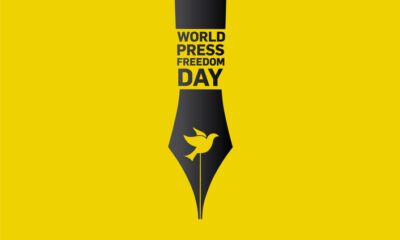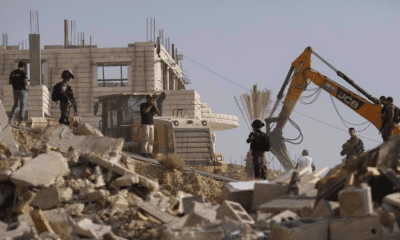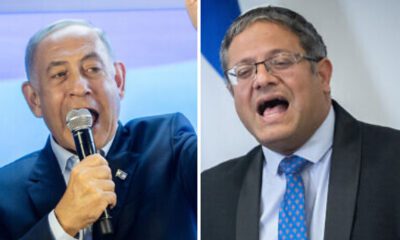The word racism has been doing rounds on the internet for a long time now but in reality, especially, for the people who experience it every day, it is MUCH WORSE.
With worldwide demonstrations and protest, racism has become a well-known concept, and people have started to accept how it is practiced in different parts of the world. What we call “a fair world” is not always fair.
Some nations are mistreated worldwide, thanks to the simplest form of racism often spread through media!
Death of the young George Floyd and Ahmaud Arbery shows us how the general mentality prevails despite living in a modern era.
Not forgetting that this is not the first time we are encountering such an event. In 1993, another teenager was killed and you can guess the culprit; he spoke a different language.
What is Racism?
Racism can be defined as being treated differently because you belong to a different group of people. It might include people who speak a different language, possess a different skin color, or belong to another country. The definition of racism is widespread, and it is practiced in different ways worldwide. A black man would be bullied for not being white; a Muslim might be bullied somewhere for his religion and particularly because of his belief.
In simple words, racism can be explained as thinking of yourself to be superior to someone else based on their religion, skin color, native country, or language.
Racism might be a new word, yet its ideology is centuries old. Presented in different languages, by different ideas, the discriminatory behavior was always there. Bulmer and Solomos defined Racism in three central meanings.
- Humanity consists of several groups, and each of them has its own specifications.
- Different races have their own culture.
- All the groups have a unique origin.
Although the explanation by Bulmer and Solomos might not seem irrational, it somehow added to the already burning fire of racism.
Most of the people were trained to differentiate between people based on how well they spoke a particular language, or how they looked like, or what GOD they believed in – small things such as these are the major causes of this widespread melodrama called Racism.
The murders based on racism show the mindsets of numerous people and how they perceive other races and nations.
Racism and Global village
When we talk about the global village and racism, both the terms, do not seem related at all. On the one hand, we talk about connecting countries and nations so that they seem like a small, related village where everyone lives together and respects each other.
Whereas, on the other hand, we talk about racism which is another name for injustice and individual discrimination.
Communism and Racism
With over 200 countries in the world, we struggle with equality and a racism-free world where everyone is treated equally. Whether it’s a white person getting priority over a black, a Christian being prioritized over a Muslim or an Englishman preferred over an Asian, racism is common and practiced widely than we think. Another form of racism practiced globally is Islamophobia. The number of Muslim countries on the world map might only be 50, yet Muslims reside in various states.
Despite the successful names like Muhammad Ali, Hassan Minhaj, and the Nobel-prize holder Malala Yousufzai, Muslims are targeted characterized by their religion.
We constantly witness the racial discrimination on airports where a person from a middle-east country like Pakistan has to get in a different line to get his passport checked.
Similarly, if you are a black person living in Americas, you have to face entirely new legislature.
Unfortunately, this hatred and utter dislike prevail in current generations, and does not stop even for young minds in school are also bullied for something they have no authority and control over.
Calling the world a global village is easy, but making it one (right now) is not!
When hundreds and thousands of people face racism and abhorrence in their daily lives, how can we call this place a global village?
Why do those people have to live in another isolated part of this world only because they know that they won’t be accepted wholeheartedly when they try to take their place among the natives?
Is this the true face of humanity? Well, a huge yes for now.
What does the UN say about Racism and Global Village?
After World War II, the United Nations listed guiding principles, one of which is the principle of non-discrimination on the grounds of race, culture, or religion.
From 1973 to 2003, the United Nations dedicated three decades for the support of victims of racism and stigmatized nations.
- The first decade focused on the measures taken and the implementation of rules to eliminate racism.
- The second decade constituted a world public information campaign for human rights and recourse processes for the sufferers. Additionally, it provided a guide to different countries’ governments to ensure the implementation of laws against racism.
- Third and final decade was dedicated to educating people for understanding human rights and how the discriminatory mindset is affecting our social behavior.
The work worth of three decades helped overcome racism in a few parts of the world, but the change was not long-lived mainly because “you can educate a person but you can not change his nature“.
Many people around the globe still need to be taught to respect everyone equally. The United Nations needs to launch more programs to discourage racism in any form.
End Racism to create a Global Village
The world can become a global village only if we eliminate the word Racism from our daily lives. It is essential to teach our young generation that treating everyone equally is not a favor, but a fundamental human right, and the best thing you can do for a stranger. Teaching them that nations and people can only live together by tolerance. Everyone must know that living peacefully is not only based on racial privileges but on all the individuals who have basic human rights regardless of their skin color or religion.
Let’s end this discrimination today and right now and make sure that we do not victimize anyone for belonging to another group of people, whether it is racial or religious.
Let’s end racism and make this world a global village, where only tolerance, unity, and respect persists.


 Featured2 years ago
Featured2 years ago
 Featured3 years ago
Featured3 years ago
 Featured2 years ago
Featured2 years ago
 Featured4 years ago
Featured4 years ago
 Featured3 years ago
Featured3 years ago
 Featured5 years ago
Featured5 years ago
 Featured2 years ago
Featured2 years ago
 Featured3 years ago
Featured3 years ago

























